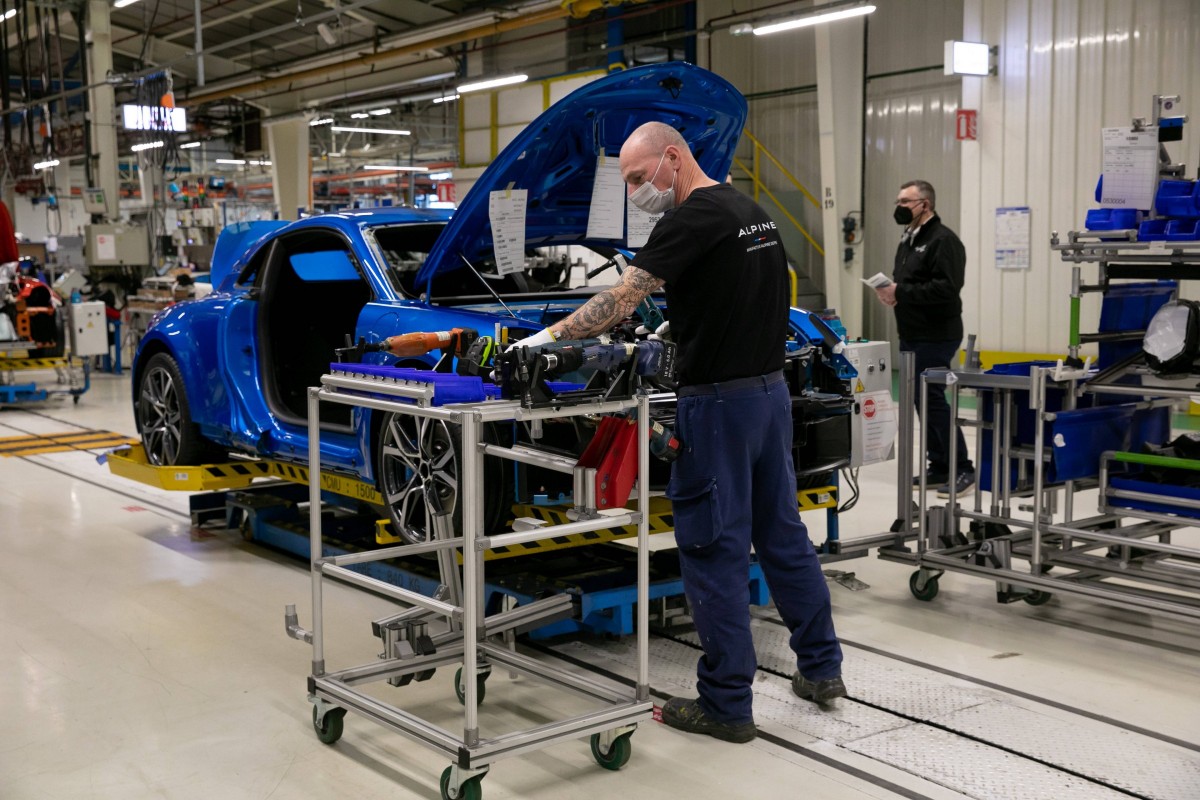Eurozone GDP Continued To Grow In The Fourth Quarter Despite Omicron
The quarterly growth rate of 0.3% proved the resilience of the eurozone economy. While Omicron, inflation, and supply chain disruptions continue to weigh on expansion in the current quarter, we don’t expect growth to turn negative.

We had an upside growth surprise in France. Pictured, a Renault car factory in Dieppe
The eurozone economy is handling the pandemic better by the wave. The current Covid impact has seen milder restrictions put in place and mobility data already suggests a smaller impact compared to last year. This GDP data confirms that. Of course, it still marks a slowdown compared to growth in the third quarter, but that was to be expected given the moderating rebound effects, supply chain problems, and increased coronavirus infections. The fact that GDP still continued to grow is a sign of strength for the economy.
Germany did not manage to grow in 4Q, confirming that the economy continues to trail the eurozone average on the back of being harder hit by supply chain problems than other countries given its high share of automotive production as a share of GDP. France on the other hand did see growth surprise on the upside with 0.7% growth, mainly driven by catchup consumption in the service sector. Italy did better than expected with 0.6% growth, but Austria showed that economies are not yet immune to lockdowns either. It saw GDP shrink by -2.2% on the back of the harshest lockdown of the eurozone in the quarter.
A decline in GDP is likely to be avoided in this current quarter as well. Even though slowing factors remain in place, the PMI for January was pretty encouraging as it remained well above 50. The jump in the manufacturing PMI was particularly good news as it indicates that some alleviating of supply chain pressures helped output improve. The decline in service sector PMI reflects the Omicron impact, but we expect some easing of restrictive measures towards the end of the quarter.
Don’t expect a swift recovery though, GDP growth is likely to remain feeble in 1Q. While supply chain disruptions have eased slightly, we expect them to continue to dampen manufacturing growth, and inflation is set to weigh on purchasing power which dampens the outlook for household consumption. While the economy is showing increasing resilience to Covid-19 waves, the winter dip in growth is hard to avoid at this phase of the pandemic. Expect growth rates to pick up from the second quarter once again.
Disclaimer: This publication has been prepared by ING solely for information purposes irrespective of a particular user's means, financial situation or investment objectives. The information ...
more


